Meredith Allard's Blog, page 14
April 7, 2021
When I Nearly Gave Up Writing For Good
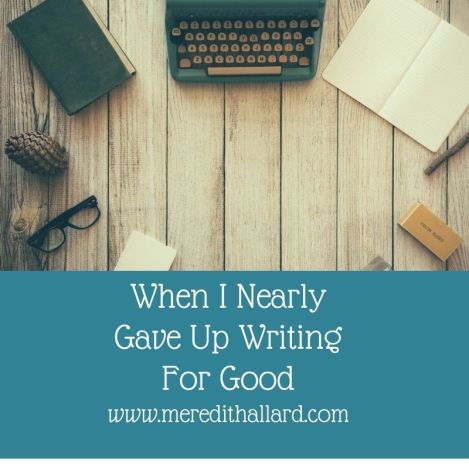
A few days ago I was reading the wonderful website Writers in the Storm and I came across this post about the writing resolution that changed the writer’s attitude and ultimately changed her writing career. I nodded a lot as I read the piece because, although the specifics of my situation were different, I understood that loss of connection with writing. I also know what it means to find it again.
Ebb and flow is something we have to make peace with because it’s part of the artist’s life, whether our art is writing, music, dancing, painting, acting, or anything else. Most of the time, we can balance the not-so-good times with the better times, and somehow we keep going. There are times, though, when the not-so-good can weigh us down, drown us, even. Between the years 2006 and 2009, I had finally gone under and I decided that I was giving up writing for good.
That was my intention, at least—to never write anything other than a grocery list again.
I started writing seriously, as in writing books that I wanted to have published, in college. My first novel, written when I was 19, was about a rock band. Yes, I know, but I was 19. The book was terrible, but it helped me realize that I did in fact want to be a writer. First I was going to be a journalist, then a screenwriter, and then I was back to writing short fiction and novels.
It took me four years to have my first piece published, a short story in a small literary journal. Then I wrote a historical novel. I had a couple of near misses with traditional publishers (and one run-in with a particularly unprofessional agent) but nothing panned out despite my high-falutin’ dreams. Then I wrote a second historical novel, and a third historical novel, still with no publishing deals to show for it. Mind, this was before the indie author revolution and traditional publishing was my only hope for getting my beloved stories out into the world.
By 2006, I had written four novels, two screenplays, a number of short stories, and several articles, to some success. I had a few articles and short stories published, but I was stuck. I didn’t know what to write next. I didn’t have another novel in me at that time. First of all, I had no ideas, and second of all, I felt like it didn’t matter because whatever I write no one is going to read it anyway. I had an idea to turn one of my short stories into a screenplay, but I wasn’t motivated to get past page two.
During this time I saw Jacqueline Woodson, the brilliant writer of books for children and adults such as Brown Girl Dreaming, Hush, If You Come Softly, and Miracle’s Boys, when she came to speak at my university. Woodson talked about how she began her writing career thinking that she wanted to be a great “literary” writer. Finally, though, she found her voice writing for children and young adults, and what a voice she found. She deserves every award and accolade that has come her way. I took Woodson’s ideas to heart. Maybe I too needed to let go of any lofty “literary” ideals.
Despite Woodson’s encouraging words, I still had nothing. At the time I was working as a learning strategist at a middle school. I had my own office, and during my lunch break I would close my door and brainstorm ideas about what to write next. I jotted down scraps of screenplays, short stories, novels, plays. Ideas galore. But nothing called to me, I had no motivation to actually write, and I still had this fatalistic feeling that whatever I wrote it wouldn’t matter anyway.
Who needs this hassle, I wondered? I felt like I was punishing myself for a crime I didn’t commit. I decided that I wasn’t going to write anymore. I’m out. Hasta la vista, baby.
I didn’t write anything for three years. Three long years. The main thing I remember about that time was that I was lost. I didn’t know who I was. I felt untethered to the earth, detached from myself. I remember that I was angry a lot. Most of the time I wasn’t even sure what I was angry about. In retrospect, I should have seen a professional therapist, but I didn’t. This is a lesson in what not to do. If you need to speak to a professional, do it. My heart told me in various ways again, and again, and again, “Hey, stop. You need to listen!”
Occasionally, I had the vague thought that I should write something. Always, I went back to the mantra, “Why bother?” I looked for ways out of my job because I wasn’t happy. I thought of returning to a Hollywood job even though I disliked the work when I was there the first time. I thought of moving to California, to London, to New York, to the moon. Anywhere but here.
You know that saying, wherever you go, there you are? Even if I had moved, it wouldn’t have fixed what was wrong with me. I continued to flap about aimlessly.
In 2009, I was teaching middle school U.S. history. One day, standing near my classroom door between classes, I saw nearly every girl carrying a black book with an apple on it. I asked one of my students about the book and she told me it was Twilight. A few weeks later another student handed me the book to read. Reading Twilight prompted me to watch True Blood, which prompted the question, what would happen to a vampire who lost the wife he loves while he lives forever?
See where I’m going with this?
The last thing I was looking for was an idea for a novel, but there it was anyway. Ideas are funny that way. They appear when you least expect them. At first, I didn’t realize it was an idea for a novel. It was just an interesting question about a preternatural man that I kicked around in my head for a few months without writing anything down. One day, I remember it was April and we were off for Spring Break, I sat down at my computer and started writing out whatever I knew about this vampire and his beloved wife.
To get back to Woodson’s point about discovering her true voice as a writer for young adults, this is was the same journey I had with the story then known as “The Vampire’s Wife.” This vampire story wasn’t going to be a Pulitzer Prize winning novel. It wasn’t going to be mistaken for literary fiction. This story was genre fiction, paranormal romance, primarily, and I was okay with that. Mainly, I was happy to be writing again.
Sometimes taking time away from whatever it is that’s frustrating us can be a good thing. Distance provides clarity. When I was trying out this writing project and that writing project, frustrated because nothing was sticking, I lost touch with the joy that is writing for me. I had to find wonder in the process again. As I was writing the book that became Her Dear & Loving Husband, I returned to writing with renewed energy and a hard-won appreciation for the role that writing plays in my life.
That’s what my heart was trying to tell me. I couldn’t stop writing because I am a writer.
March 22, 2021
Recipes From the Oregon Trail

One of the first things I did when I began researching life on the Oregon Trail was look up the recipes they cooked on the trail. Since they had limited ingredients and limited supplies to cook with, the food had to be simple to make yet still filling. Sometimes the men were successful in their hunting and they would bring back meat. Bacon, potatoes, and corn were important staples while molasses was often used as a sweetener. Flour was brought along for the journey, as were beans and rice since they were easy to store in the wagons. Bacon fat and lard were used as flavorings. Other popular dishes cooked along the trail were bison, oxtail soup, vegetable pie, dumplings, and various cakes and pies.
Here are some recipes from the Oregon Trail from homesteading.com.
Johnnycake
Ingredients:
2 eggs2 cups buttermilk1/2 cup flour2 Tbsp. molasses1 tsp salt2 cups cornmeal1 tsp baking powder2 Tbsp. butterRecipe:
Beat eggs, then add buttermilk and molasses.Mix the cornmeal, flour, salt, and baking powder.Add butter.Bake the cake mixture in a dutch oven until done.Potato Cakes
Ingredients:
6 medium potatoes2 teaspoons salt1/2 cup milk2 eggs1 cup flourShorteningRecipe:
Wash and peel potatoes, then grate medium fine.Combine with salt, milk, eggs, and flour.Drop mixture by spoonfuls into hot shortening in skillet and fry until golden brown on both sides.Leslie J. Whipple shared some of the more popular recipes from the Oregon Trail in her The Oregon Trail Cookbook, which was published in 1992. According to Whipple, “At the heart of this [difficult] journey was the daily struggle to feed the family.” You can read more about Whipple’s cookbook here.
And here’s a modern-day recipe for bread pudding from True West Magazine since I’m pretty sure they didn’t have ovens on the Oregon Trail they could set to 350 degrees Fahrenheit. But you get the general idea.
Ingredients:
stale bread
Warm water
butter
4 cups milk
4 eggs, beaten
sp. salt
1 cup light brown sugar
sp. grated nutmeg
currants or raisins, optional
1 tsp. vanilla (Sherry’s suggestion)
sp. cinnamon (Sherry’s suggestion)
Recipe:
Cut the bread into cubes and place it in a bowl. Add enough water so all the bread is soaking and covered. Allow to sit for 10 minutes, drain and then squeeze dry.Add the butter and stir to combine. Next, add all the remaining ingredients and mix well. Pour into a 9″ x 12″ pan and bake at 350° for about 45 minutes. Allow to sit and cool before serving.If you’re looking for a list of websites with food from the Oregon Trail, you can find it here on findrecipeworld.com.
With the exception of freshly hunted meat or milk from the cows that were brought along the trail, cooking on the Oregon Trail was largely about using what was brought along the 2000 mile journey. Despite the limited access to fresh foods, the meals were hearty. That is, as long as the family had enough to supply them for the entire journey.
March 12, 2021
When a Story Comes Together
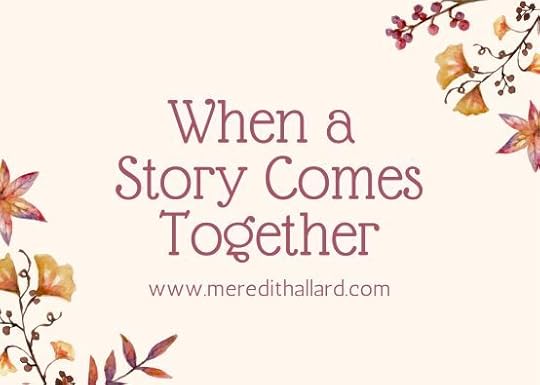
Before I get to my post today, I wanted to share some wonderful news. Her Dear & Loving Husband is now officially an award-winning novel. James and Sarah have won the Coffee Pot Book Club Book Award for highly recommended novels. Cool, right?
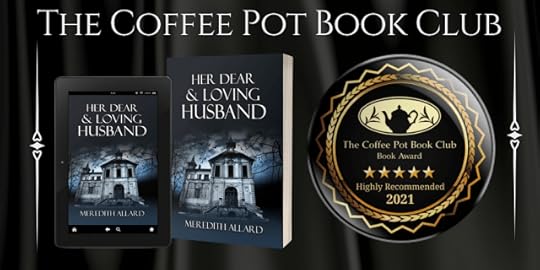
And now, on to the show.
I love it when a story comes together. The story for The Duchess of Idaho finally revealed itself last week, and I’m currently a Very Happy Camper.
It’s funny how our writing process can change over the years. When I first started writing fiction many moons ago I was a complete plotter. I had to figure out the outline of my work in progress from beginning to end, and then, and only then, would I begin my first draft. What I came to realize, though, is that needing an absolute grip on the plot before I started writing meant that I often wouldn’t begin my first draft for months after I had decided that this novel was something I was willing to dedicate blood, sweat, and tears, not to mention time, to finish. As a result, I ended up writing more slowly than I might have otherwise. That’s not a complaint, by the way. As writers, we write at the speed we write, no faster and no slower. For some of us, that means we publish several books a year, and for others of us that means we publish one book a year, and still others might release a book every couple of years.
Late in 2020, I decided that I wanted to publish Christmas at Hembry Castle just to prove to myself that I could put a book out more quickly than I thought I could. I had a head start since I knew the Hembry world (this was the second book in the series) and I knew the characters. What I didn’t know was the plot. All I had was a vague sense that I wanted C@HC to be a tribute to Dickens’ A Christmas Carol. To that end, I just started writing. This was the first time I began a story as a “pantster,” flying by the seat of my pants instead of having the plot set out step by step.
As I was writing C@HC, and as the story started coming together, I realized that I could discover the plot organically while working my way through my shitty first draft at the same time. What a revelation. I decided to see if it would work again with The Duchess of Idaho, and I’m pleased to see that it did. Again, I had a vague sense of the story. I knew it would revolve around Grace Wentworth, James and Sarah’s daughter from the Loving Husband Series, and I knew a few odds and ends about what happened to Grace. I didn’t know specifics, but I started writing anyway.
I feel more productive with the “pantster” style of writing because I get two things done at the same time—plotting out the story and writing the shitty first draft. Before, I labored over the outline for months and then I’d write the shitty first draft, which also took months to complete. Now I have the general plan for The Duchess of Idaho after about two months (I started the first draft in January). For me, that’s crazy fast. Plus, my first draft is nearly done, and that’s always the most painful part of writing a novel—at least it is for me.
A few more weeks and my first draft will be done. I’ll set it aside for a bit, give it some baking time, and then I’ll head into what is always the best part of writing fiction for me—shaping the story into its final form.
March 1, 2021
What I’m Reading
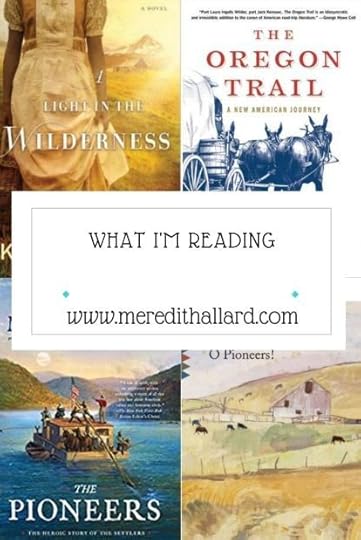
It’s crazy how much fun I’m having going back to one of my favorite worlds, James and Sarah Wentworth’s world. And here I thought the story was done with Her Loving Husband’s Return! Where Down Salem Way was a prequel, the new book, titled The Duchess of Idaho, is a sequel, as in it takes place after Her Loving Husband’s Return. Our favorite witch, Olivia, is there to lend a hand as she helps James and Sarah’s daughter, Grace, unravel her own mystery.
The historical background for this story is the Oregon Trail in mid 19th century America. As you can imagine, I have a lot to learn. Here I go again choosing to write a novel set during a time I know nothing about. Luckily for me, I love learning about history.
I’m in the early stages of research at this point. I’ve started taking notes and I’ve found a number of scholarly articles that are helping me gain a general overview of what life was like for the pioneers on the Oregon Trail. One novel I’ve read so far is A Light in the Wilderness by Jane Kirkpatrick. I learned a lot about life on the Oregon Trail from the book, which was helpful.
Another book I’ll be reading to for inspiration is The Oregon Trail: A New American Journey by Rinker Buck, which examines Buck’s experience traveling the Oregon Trail, yes, in a covered wagon, in present-day America.
I’m also looking forward to reading the classic O Pioneers by Willa Cather along with the companion book, My Antonia, as well as The Pioneers: The Heroic Story of the Settlers Who Brought the American Ideal West by one of my favorite historians, David McCullough. Though Cather’s novels and McCullough’s book aren’t specifically about the Oregon Trail, I think they’ll shed interesting insight into the pioneering spirit.
What prompts people to leave behind everything and everyone they know for a dangerous journey and a new life faced with hardships? I’m looking forward to learning the answer to that question through my research into life on the Oregon Trail.
February 22, 2021
The One Thing a Writing Book Can’t Teach You
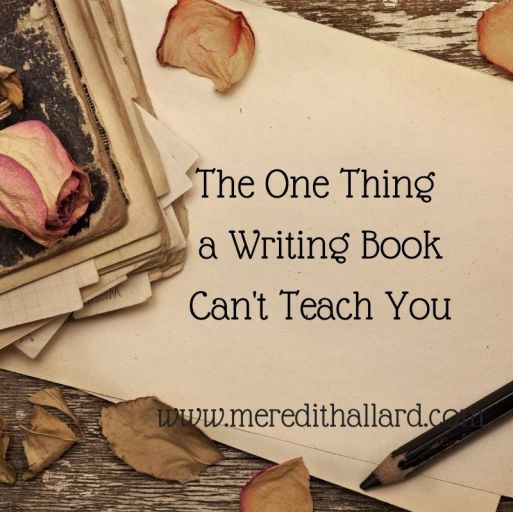
Since Painting the Past: A Guide for Writing Historical Fiction was released I’ve been thinking a lot about writing books. I’ve read many of them, believe me, especially when I was a fresh-faced writer dutifully taking my English, screenwriting, and creative writing courses as an undergrad. I combed through those how-to writing books searching for the magic formula that would allow me to write my own brilliant screenplays, stories, and novels.
My favorite writing books are the ones by Natalie Goldberg and Anne Lamott because they’re not making declarations about how you must write. They are sharing their own writing journeys. Stephen King does the same in On Writing. Okay, King makes some declarations, but then he’s Stephen King and he’s allowed to make some declarations about good writing. But even King is clear about the fact that he’s writing about his own habits and preferences and he points out that different writers will do things differently. Books like On Writing, Writing Down the Bones, and Bird by Bird are valuable because there’s a lot to learn from seeing how other authors develop their habits and skills.
But there is one thing that no writing book on earth can teach. Can you guess what it is? I’ll give you a moment…
The one thing no writing book on earth can teach you is how to write. That’s right. No writing book, not one, can actually teach you how to write.
The only way anyone can learn how to write is by writing. Writing is the only way you’ll learn how to formulate a beginning, middle, and end of a story. Writing is the only way you’ll learn to create believable characters and worlds. Yes, you need to read too. As Stephen King points out, if you don’t have time to read then you don’t have time to write. But at a certain point, you need to put the books aside, pick up your pen, or sit at your computer and write. There is no getting around this fact.
How-to writing books can only inspire. They can give tips and tricks. They can spark the imagination. But they cannot teach you how to write. In Painting the Past, I shared stories about how I write historical fiction because that’s all I can do from this side of the computer screen. I can’t tell you exactly what you need to do to write historical fiction because I don’t know you. I don’t know how you learn, or what your interests are, or what your writing process is. I don’t know what your research process will be. Maybe you don’t even know that yourself yet. I can’t teach you how to think, or how to process information. I can give tips for how to create voice, but I can’t teach writers how to show voice because that’s something unique that can only come from the writer. Plus we have different influences. I think Charles Dickens is awesome sauce. You might think Dickens sucks eggs. That’s okay. That’s why there’s always room for new writers with new ideas.
Many writers want a blueprint for how to write, especially for fiction. They want someone to give them a plan, a formula to follow. First do Step A, then Step B, then Step C until your story is all shiny and pretty-like and ready for the New York Times bestseller list. When some writers read a how-to book that offers suggestions, because that’s all any writing book can do, they feel like they were ripped off. Wait a minute. This book didn’t teach me how to write a book! No, it didn’t because it can’t. What the how-to writing books are actually telling you is how that one particular writer writes books. You might find that information helpful or you might not. Some writers dig the Snowflake method for writing novels, for example. Such formulas make me want to pop my own eyes out with spoons. Which one of us is right? We both are because we have different ways of writing.
No matter how much actionable advice you find in a writing book, you’re still going to have to figure out how to write by writing. By jumping in and flailing and trying this and trying that and trying the other thing until you find something that works. Then you’ll find something else that works and you’ll do more of that.
Look to writing books for ideas, inspiration, explorations into how other writers do what they do. Look to writing books for some actionable advice and takeaways that you can apply to your own writing. But ultimately you need to start writing and keep writing until you find your own way.
The secret to learning how to write a book is writing a book. That’s it.
February 17, 2021
A Workbook for Writing Historical Fiction
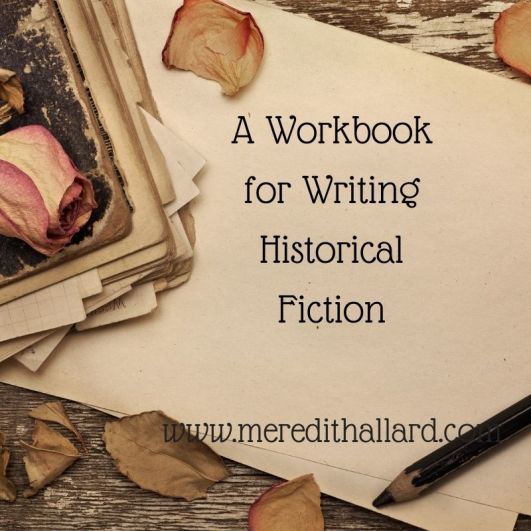
Oh my! Just a few hours after its release yesterday, Painting the Past was tagged by Amazon as a #1 New Release in both the Authorship and the Authorship Reference categories. I was so excited I couldn’t stop taking pictures.
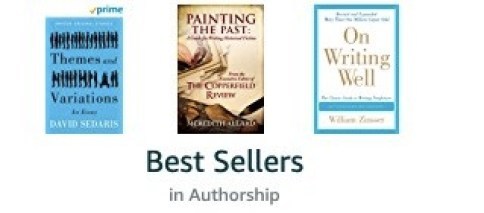
Here’s Painting the Past between David Sedaris’ new book (and I love David Sedaris) and On Writing Well, one of the most famous writing manuals of all time.
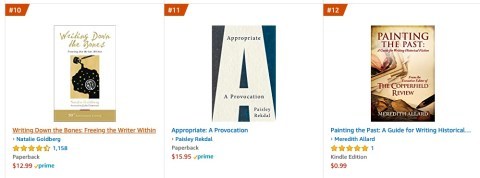
And here’s my book near Natalie Goldberg’s Writing Down the Bones (and I love Natalie Goldberg and Writing Down the Bones).
Okay, I know. Enough with the fangirling and the pictures. But it’s been very exciting for me since Painting the Past is my first nonfiction book.
My point for this post, and I do have one, is that I realized yesterday of all days that Painting the Past would work well with a companion workbook. I don’t know why it didn’t occur to me before, but I’m a little slow sometimes. I created a workbook to go along with Painting the Past that allows readers to journal out their responses to the Quick Writes and questionnaires that appear in the book.
I know that many of you have already bought the book, so I’m making the free companion workbook available here courtesy of the friendly folks at BookFunnel. I had a lot of fun putting the workbook together, and I hope those of you who have read Painting the Past find the workbook to be a fun, interactive way to think through the questions in the book.
I know I said thank you to my readers yesterday, but after the launch Painting the Past has had I feel like I owe you a double-triple thank you with ice cream on top. Those of you who are reading it, I hope you are enjoying it.
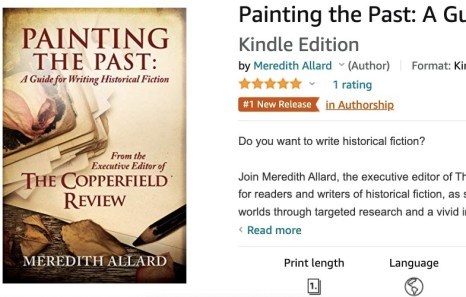
Now back to my picture taking.
February 16, 2021
It’s Here: A Guide for Writing Historical Fiction
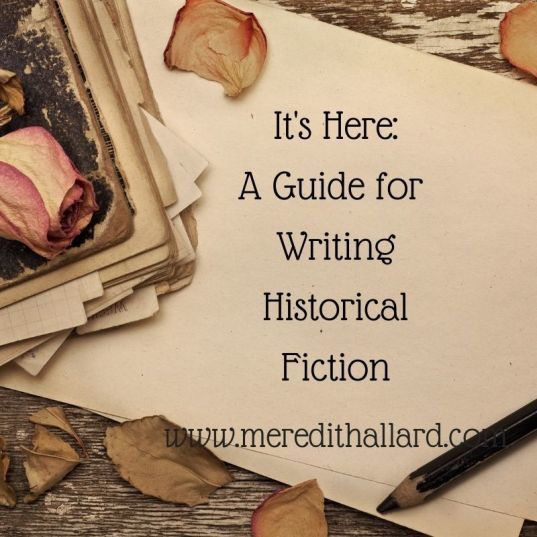
I’m so happy that I can finally share my first nonfiction book—Painting the Past: A Guide for Writing Historical Fiction—with everyone. Already, on its first day of release, Painting the Past has been named the #1 New Release in Authorship. Amazing. Thank you to everyone to helped to make this happen.
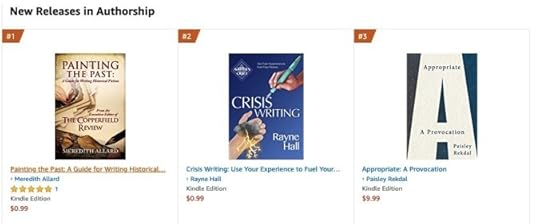
I came up with the idea for writing Painting the Past in 2017 (seems like an eon ago, doesn’t it?). I was excited at the prospect of sharing what I’ve learned about writing historical fiction. I started organizing and drafting the chapters, and I even commissioned the cover. Then I had to focus every ounce of energy on finishing my dissertation. After I passed my dissertation defense, I needed a brain break since I was certain my fried brain cells were no longer capable of functioning in any meaningful way. After I recovered, my focus turned to finishing Down Salem Way. Family medical issues ensued, along with other life stuff, and before I knew it we were engulfed in a world overturned by COVID-19.
Like many of you, I’ve been doing a lot of soul-searching brought on by living during a pandemic. I’ve had more time to sit, think, and be. If I’ve learned anything over the past year it’s that everything changes, including us. We evolve over time. My evolution includes the realization that it’s time for me to focus more on my writing, and that included completing Painting the Past and putting it out into the world.
After some hems and haws about releasing the book, it occurred to me that I was nervous. After a lot of introspection (and more journaling), I realized that there’s nowhere to hide in nonfiction. After a novel is published, if anyone says anything about a character or the story, I can say simply, and truthfully, it’s fiction. It’s make-believe. I pretended that story into being. I haven’t the slightest fear about releasing my fiction. I know that not everyone will love everything I write, but I have been blessed, truly, with readers who like what I do. When Christmas at Hembry Castle was finished on November 28, 2020, I made sure everything was all pretty-like and the book was published—that fast. Not a second thought. Not one.
With nonfiction, I can’t hide behind a fictional story or an imaginary character. That knowledge nearly paralyzed me into not writing Painting the Past. Still, after the year that was 2020, and with everything we’re still contending with at the beginning of 2021, I decided to be brave. All I’m doing is sharing ideas, after all. My ideas about writing historical fiction have been developed over 20 years of reading, writing, teaching, and editing historical fiction. While my ideas about writing historical fiction aren’t the end-all, be-all of writing historical fiction (no one’s ideas can be because we’re all different), they are shared with the thought that maybe there’s something in the book that can help others along their journey.
Ultimately, that’s what helped me past the fear of releasing Painting the Past—the thought that I might help someone else the way, say, Writing Down the Bones by Natalie Goldberg or Bird by Bird by Anne Lamott have helped me.
If you’ve been following this blog you’ll likely recognize some of the chapters in Painting the Past since they began life here as posts. I fleshed out the blog posts with more in-depth information and added Quick Writes that will help readers discover how they can write their historical tales. I’ve also addressed some of the frequently asked questions about writing historical fiction that I get as the executive editor of a literary journal of historical fiction. Most of the questions are related to researching historical fiction, so I went in depth about the research process. As writers we cannot create believable historical worlds if we know nothing about the time we’re writing about.
I breathed a sigh of relief when the first reviews for Painting the Past started coming in, primarily from NetGalley. Three reviews, three five-star reviews. Thank goodness. The nice reviewers got my off-hand sense of humor, my constant references to Poppy (my cat), and my message about how as writers we are all Dorothy discovering that we already have the power. Suddenly, putting myself out there, all me, all the time, sharing my ideas about historical fiction doesn’t seem so scary. I’m already outlining my second nonfiction book because I realized I have so much more to say about writing. Writing has been my lifeline. I’m not sure who (or how sane) I would be if I weren’t a writer. I’m excited to share more of what I’ve learned in the future.
If you’re interested in writing historical fiction, Painting the Past: A Guide for Writing Historical Fiction is now available through Amazon, BN, Kobo, Apple Books, and you can buy direct from me at my shop with PayHip. See the links below. Since Painting the Past is my first nonfiction book, I wanted to get it into as many hands as possible so it’s on sale at a special introductory price of $0.99 until March 1, 2021, when it will change to the regular price of $4.99. If you’re a NetGalley subscriber, you can access review copies of the book here.
One of the nice reviewers at NetGalley said that there are good takeaways from Painting the Past that apply to writing any genre of fiction. Of course, the book is intended for those who want to write historical fiction, but I’d like to think that any fiction writer can find helpful tidbits in the book.
Thank you to the many contributors at The Copperfield Review, the readers of my novels, and the readers of this blog. The fact that I’m still going after ten years is really thanks to all of you. I’m excited to enter this new phase of focusing on my writing, and I have a few other goodies up my sleeve (podcast, anyone?).
If you’re looking to write historical fiction, I hope that Painting the Past helps you on your journey. Please do let me know what you think. I love hearing from readers.
 Buy direct from me at payhip.com/MeredithAllard
Buy direct from me at payhip.com/MeredithAllard





February 1, 2021
Favorite Books About Writing
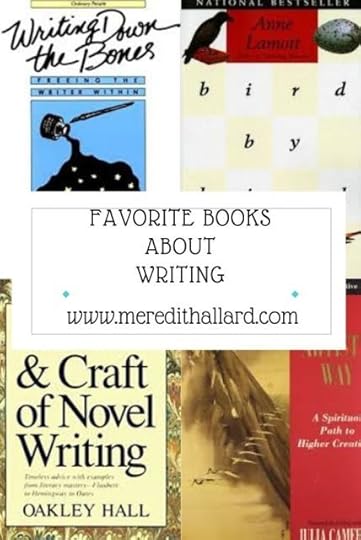
As I’ve been adding the finishing touches to my first nonfiction book about writing historical fiction, I’ve been thinking about the writing books that have inspired me over the years. There are too many to name in a short blog post, but here are a few I go back to again and again.
Writing Down the Bones by Natalie Goldberg
This little book is the cream of the crop as far as writing inspiration goes. I read this book for the first time many moons ago for a creative writing class and I was blown away by Goldberg’s simple yet profound message about what writing truly means. She doesn’t mention bestseller lists. She doesn’t mention selling x number of books. She doesn’t speak about publishing at all. She talks about writing from the heart, about writing your truth. Mainly, she talks about the importance of writing practice. More than anyone else, Natalie Goldberg has shaped the way I view writing, and I use many of her tips when I’m teaching writing.
Bird by Bird by Anne Lamott
Like Writing Down the Bones, Bird by Bird is one of those books that has shaped the way I view writing. I love Lamott’s sense of humor. Mainly, I love her honesty about how writing is difficult for her. So many times people write about writing as if it’s something magical that happens when you wave a magic wand. No, it really isn’t. It isn’t for me, and it isn’t for any other writer I know. Lamott is one of the few people who have been honest about that.
I also appreciate Lamott’s honesty about the fact that publication isn’t going to change your life magically overnight. That is another fallacy that writers continue to have.
The Art and Craft of Novel Writing by Oakley Hall
I just checked on Amazon, and this book from 1989 seems to be out of print but there are second-hand copies available. If you’re interested in learning about how to write fiction, I cannot recommend this book enough. Do get your hands on a copy if you can. The Art and Craft of Novel Writing has been the single most influential book on how I construct my novels, historical or contemporary.
The Artist’s Way by Julia Cameron
The Artist’s Way by Julia Cameron is well known in writer and artist circles, as it should be. I read this one a few years ago when I was in the middle of a creative slump, and it did indeed me find my way again. The book isn’t specifically about writing, and the lessons can apply to any art as well as life in general. Cameron’s idea for artist dates allowed me to reconnect to my love for coloring and I even started dabbling in art journaling. Like Writing Down the Bones, The Artist’s Way is about spirituality as much as it is about creativity.
Honorable mentions go to How To Write and Sell Your First Book by Oscar Collier and On Writing by Stephen King.
All of the books I’m recommending here are oldies but goodies, but in all the years that I’ve been writing I haven’t found anything better.
January 19, 2021
Coming Soon: A Guide for Writing Historical Fiction
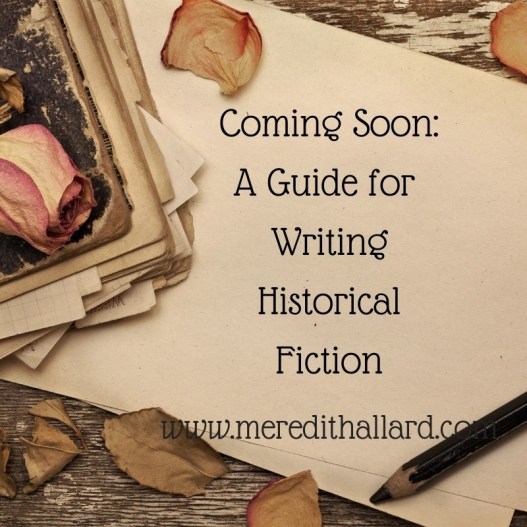
I’ve finally completed the final edits on my first nonfiction book, Painting the Past: A Guide for Writing Historical Fiction. I know you’re so surprised that I wrote a book about writing historical fiction. Painting the Past was very much a passion project and one I’ve had simmering on the back burner for a while now. I’m happy to finally be able to share it with others.
Those of you who have been reading this blog for a while may recognize some of the chapters in Painting the Past since they’re based on posts that first appeared here. The blog posts have been fleshed out with fresh information and insights, and I’ve also addressed a number of the frequently asked questions I’ve received over the years. Writing the book allowed me the opportunity to gather all my crazy ideas about writing historical fiction in one place, which makes it easier for me and for anyone else who wants an idea or two about how to tackle that historical story they’ve been wanting to write.
I’ve been wondering what it is about historical fiction that keeps me coming back for more. As a reader, I love historical fiction because it allows me to explore different eras through points of view other than my own. As a writer, I love historical fiction because it allows me to connect my life today with people’s lives in the past. I can connect to times I can never experience for myself. Learning about people’s day to day lives—from what they wore to what they ate to how they survived difficult circumstances—makes historical fiction intellectually as well as emotionally satisfying. As far as I’m concerned, historical fiction is the best of all literary worlds. Historical fiction is a truly grand genre that is a joy to read and a joy to write even though writing historical fiction may require more commitment than other genres.
One of the questions I get asked the most is, “How do I research historical fiction?” Research is one of the main aspects of writing historical fiction that is different than writing in other genres. It’s not hard to research historical fiction, but it does take a little bit of time and a lot of patience. From years of writing historical fiction, and from what I learned while completing my Ph.D., I have a few tricks of the research trade to share with aspiring writers as well as those who have been writing historical stories but are looking for some new ideas to spice up their research experiences.
A good thing that came out of writing Painting the Past is that I realized I have more to say about writing, more to say about creativity, and more to say about how we teach writing. I also realized that I enjoy writing nonfiction. I enjoy sharing what I’ve learned about writing from many years as a writer, writing teacher, and editor with other like-minded souls. I’ve already started outlining my next nonfiction book, which will focus more on the creativity side of being a writer. Writers always need to have their imagination fueled so their brains are full of ideas when they sit down to fill a blank page.
Advance digital copies of Painting the Past are available for readers who are interested in sharing honest reviews. If you’re interested in writing historical fiction and you’d like a review copy, you can email me at meredithallardauthor@gmail.com or you can use the contact button in the top bar to let me know. Don’t forget to tell me which digital format you prefer–mobi, epub, or pdf. I’ll share the preorder links here as soon as they’re available. The official publication date for Painting the Past is Tuesday, February 16, 2021.
For those of you who have been asking, I’m hard at work researching the life of pioneers on the Oregon Trail (1836-1869) for my next project, The Duchess of Idaho, the continuation of the Loving Husband Series. I’ll have a lot more to say about the project over the coming months. Look for The Duchess of Idaho Autumn 2021.
January 5, 2021
Woman of Stones Interview for ManyBooks
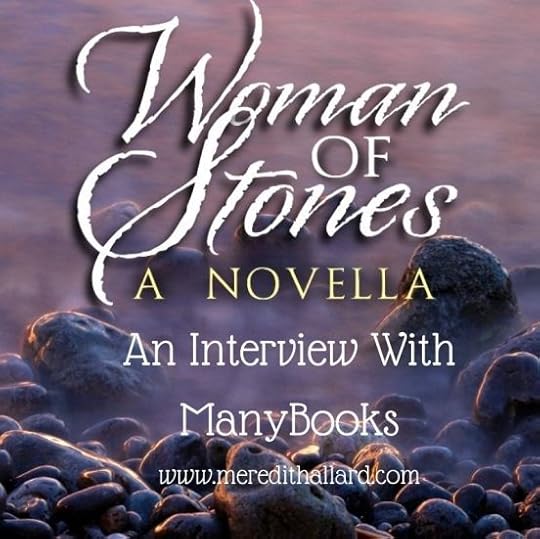
ManyBooks was kind enough to feature me as the Author of the Day today. Here’s the interview I did with them about Woman of Stones. If you’d like to read the interview on their fabulous site for readers, you can find it here. Enjoy!

* * * * *
Meredith Allard is the author of the bestselling paranormal historical Loving Husband Trilogy. Her sweet Victorian romance, When It Rained at Hembry Castle, was named a best historical novel by IndieReader. Her other books include Christmas at Hembry Castle; Down Salem Way, the prequel to the Loving Husband Trilogy; Victory Garden, set during the women’s suffrage movement; Woman of Stones, a novella of Biblical Jerusalem; That You Are Here, a contemporary romance; The Window Dresser and Other Stories; and Painting the Past: A Guide for Writing Historical Fiction. When she isn’t writing she’s teaching writing, and she has taught writing to students ages five to 75. She loves books, cats, and coffee, though not always in that order. She lives in Las Vegas, Nevada. As our Author of the Day, she tells us all about Woman of Stones.
Please give us a short introduction to what Woman of Stones is about.
Woman of Stones was inspired by the Bible story about the woman caught in adultery who was about to be stoned to death before Jesus’ wise words saved her. The story imagines who she was, what her life was like, how she ended up there ready to be stoned to death, and what might have happened to her afterwards.
What inspired you to write about someone from a poor Jewish settlement in a powerful Greco-Roman world?
I read The Red Tent by Anita Diamant and I absolutely loved that book. I loved Diamant’s gorgeous prose and I loved the idea of retelling a Bible story from a woman’s point of view. I’ve always loved that Biblical lesson—let you without sin cast the first stone—because it’s a lesson most of us need to be reminded of on a daily basis. That gave me the idea to delve further into this woman’s story.
Readers found this story very thought-provoking. Was this your intention?
That’s actually an interesting question about whether or not it was my intention to make it thought-provoking. When I originally began writing the book, my only intention was to tell the story of this woman who was dragged as an adulteress into the Temple Court in Biblical Jerusalem. As I delved further into the writing process I realized that there were layers to the woman’s story that needed to be unpacked. What was life like for women in Jerusalem during the time of the Second Temple? How were marriages arranged, and what if you’re not suited to the person you’re married to? What about gossip and the ways people are controlled within their societies? These were all questions that, the further I dug into them, the more I realized that maybe in some ways our society hasn’t changed as much as we like to think it has. The story certainly caused me to think, and I’m glad readers have felt the same.
Tell us more about the woman. What makes her tick?
She has an intriguing backstory, the woman. She grows up poor, a shepherd’s daughter in Nazareth, a Jewish village. Yes, I chose Nazareth specifically because I, and I hope readers as well, found the idea of exploring Biblical Nazareth interesting. But where she grows up in Nazareth she’s close to the powerful, richer Greco-Romans and she can see the comforts the women have, comforts she doesn’t share because she is a poor shepherd’s daughter. She covets their fine clothing and jewels, and she thinks that what she wants more than anything is to have those fineries for herself. When she has the opportunity to get exactly that, she finds that material wealth may not be the most important thing after all.
Readers found it interesting to see the portrayal of everyday life, the descriptions of Nazareth and Jerusalem. How much research did this story require from you?
Woman of Stones required a lot of research because it was a time that was so foreign to me, both literally and figuratively. I wrote an early draft of Woman of Stones when I was living in Boise, Idaho, and I did a lot of my research at the library of Northwest Nazarene University. I wasn’t a student there, but I would visit the library to find books and articles to help my research. I spent hours in that library reading and taking notes. It took me some time to be able to visualize life in Nazareth and Jerusalem 2000 years ago, but after enough reading and note-taking, I understood enough to be able to bring the woman’s story to life.
Besides writing, what other secret skills do you have?
I’m also a writing teacher and I teach education at the university level. I love to cook and to bake. I love my coloring books—some childhood joys never leave you. Of course, reading is a great skill, though I don’t think it’s very secret since most people know how much I love to read.
Why did you title this “Woman of Stones?”
The most obvious answer is that she is the woman who is about to be stoned to death for being caught in adultery. The underlying answer is that stones are used to grind the wheat from which they made bread, a staple food then. She is entranced by the gemstones that the richer Greco-Roman women wear, and when she is married her husband gives her gemstones. Stones are an important theme in the story.
Which character was the most challenging for you to create?
The woman herself was the most challenging character because without her there is no story. This book is a first-person narrative, so I had to dive very deeply into her psyche to tell the story from her point of view. Once I understood her, her memories, her mistakes, and her hopes, then everything else fell into place.
One question I’m asked a lot about this novel is why the woman doesn’t have a name. The answer is two-fold. First, she doesn’t have a name in the Bible story and I felt silly tagging her with some arbitrary name—Betty, Sarah, or Joan, for example.
Second, you have to understand a bit about the Hebrew language. During the time when Woman of Stones takes place, which is the era of the Second Temple about 2000 years ago, Aramaic was the spoken language among the Jewish people and Hebrew was the language for prayer. Still, in Hebrew the word for husband is ba’al, which is also the word for master. The Hebrew word for wife is isha, which is also the word for woman. In other words, the word for woman and wife are interchangeable in Hebrew. So when her husband calls her “Woman” he could just as easily be calling her “Wife.” You can glean a lot about the unfair divide between men and women from that one tidbit. This is the same society where a woman could be stoned to death for adultery but not a husband and the same society where a woman needed her husband to grant her a “get” (a divorce) but the husband could dissolve the marriage when he wished.
Is there an underlying message you wish to relay about basic human nature through your characters?
When I’m writing any of my novels, I’m most fascinated by people and the choices they make. One thing I’ve learned from writing historical fiction is that people haven’t really changed over time. People still want the same things—to belong, to love, to know that they matter. Clothing, medicine, even social mores have changed, but people’s inherent wants have stayed the same and I enjoy exploring that through my fiction.
As far as writing with underlying messages, I prefer for readers to decide for themselves what my stories mean. I always like to say that my stories can be taken on different levels—there is the story itself, and many readers are happy just reading for the story and that’s perfectly fine. But there are layers beneath the story that readers can dig for if they wish. I don’t like to say what my stories or my messages are about, though, since I think it’s more meaningful for readers to decide for themselves.
You write about some heavy themes—things that many of your readers have probably never experienced—yet it’s very easy to identify with your characters. How do you make them so relatable?
I think this goes back to my earlier answer about how people haven’t really changed over time. Even though those of us alive today haven’t experienced Biblical Jerusalem for ourselves (at least those of us without a TARDIS), we know what it is to covet something and we know what it is to be unhappy with our lives and to want something more. Some of us know what it is to be married to someone who isn’t necessarily right for us and others of us know what it is to fall in love with someone who isn’t available to us. The everyday details of how the woman lives might seem alien to us in some ways, but she struggles with very human problems that many of us still deal with today.
When starting on a new book, what is the first thing you do?
The first thing I do is kick the story around in my head for a while without writing anything down. I like to play around with ideas and see if the idea is something I’d like to write about. When I make the decision to write a historical novel, I know I’m committing myself to months of work so I like to play around with the idea for a bit first to see if it’s something I want to commit so much time and energy to. Then I’ll read a bit about the era to get a sense of the time I’m writing about. From there, it’s idea gathering, prewriting, and finally drafting.
Do you have any interesting writing habits? What is an average writing day like for you?
I’m not sure my writing habits are particularly interesting, although since COVID-19 has put both of my teaching jobs online, I’m finding that I can’t continue staring at a computer screen for upwards of 12 hours a day so I’m starting to find ways to return to pen and paper like I used in old-timey days. I’m experimenting with handwritten journals as a way to work on my writing.
What are you working on right now?
I’m working on two projects at the moment. I’m in the final edits of my first nonfiction book called Painting the Past: A Guide for Writing Historical Fiction, which will be published on February 16, 2021. Then my next historical novel will be about pioneers on the Oregon Trail. That one will be released Autumn 2021.
Where can our readers discover more of your work or interact with you?
The best place to contact me or learn more about my work is through my website, meredithallard.com.
If you’re looking for some great ideas for free books to read, check out ManyBooks’ website.



